I’ve finished a month of QSOs and thought it’d be fun to look at the results.
Early (5pm) in the evening, I can hear activity along the east coast, Mexico, and Cuba(!), but I am unable to get through. Not surprisingly, most of my contacts have been between 7pm and 10pm (02 – 05 UTC), when the sun’s dropping and signal propagation is improved.
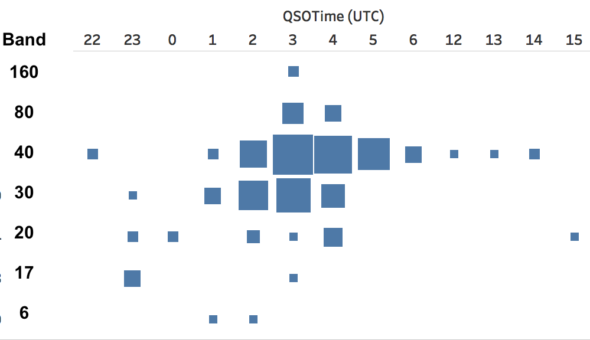
Most of my contacts have been on 40m (7.074MHz), but I’ve been branching out because that band has become insanely busy, especially in recent weeks as more people have been playing with the FT8 digital mode. In the map below, red dots are 40m, green dots are 30m, yellow dots are 20m, Pink = 17m and Blue = 80/160m.
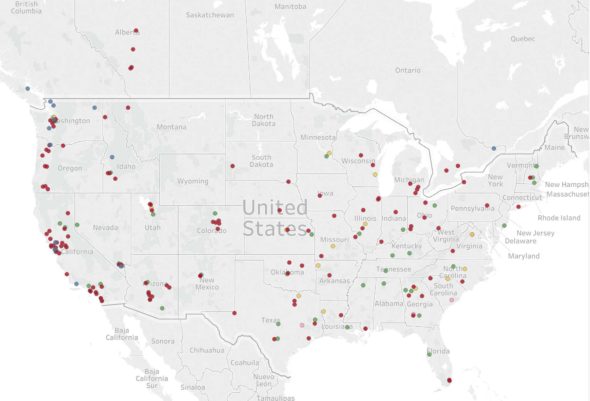
There’s a longer, very good description of band behavior, but I’d summarize my one month of summer QSO experience so far as:
- 40m – locally (within a few hundred miles) early morning and late afternoons, longer at night, when I’ve reached New Zealand, Australia and Hawaii. Unfortunately, it can be insanely busy, with people inadvertently transmitting over one another (… insane considering this is a 50Hz-wide signal).
- 30m – medium-range during the day, long at night. People on this band seem to be pretty chill.
- 20m – this is the most interesting band for distance contacts. Although I have picked up stations in Samoa and Fiji, they couldn’t hear me over the other folks.
- 17m – when it was working well, I was able to talk with the east coast in the early evenings.
- 80m – Pretty noisy and, so far, only usable at night. When there’s been a strong signal nearby, I’ll see echoes. (For example, someone transmitting on 1000Hz will also show up on 920/1080Hz and 840/1160Hz, albeit at a weaker strength.) Because it’s 80Hz off, I assume I’m seeing multi-path.
- 15m, 12m, 10m: Dead to me. I haven’t been able to receive anything on these yet.
- 160m – Not feasible with my current setup due to the antenna length and power required.
This is all subject to the propagation gods (sunspots, flux index, seasons), of course, so I’m looking forward to seeing how it changes as we get into winter. I will hopefully worked out a weather-alternative for sitting out on the deck.
The other aspect of HF vs VHF is folks are much more likely to log their connections because they use them in a variety of contesty-ways and challenges. Because it would be easy to cheat, there are three common services used to record electronic records.
Logbook of The Web — this is owned/administered by ARRL, the equivalent to the AOPA of radio, and its focus is on award veracity. Setting it up is a three-part verification process that feels absurd. You sign up. If you’re a US license holder, you’ll receive a postcard 3-5 business days later with a one-time password. Type that in, then wait three more business days to receive an electronic certificate.
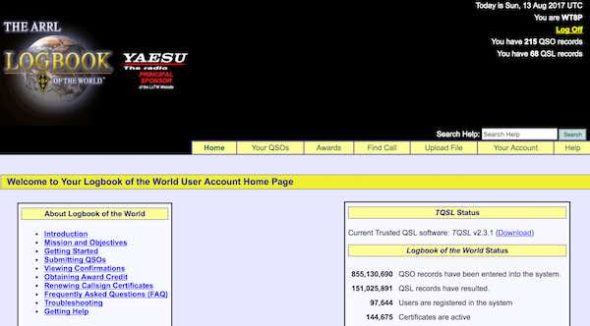
You can manually “sign” logs with their custom tool — it feels like code signing a program: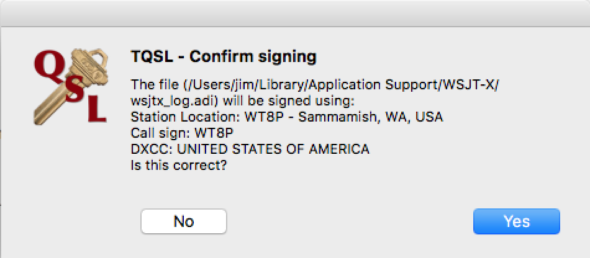 On the back-end, if they receive an equivalent log from the other player, the log is considered validated. As of today, it doesn’t support FT8 because the ADIF committee hasn’t validated it as an official protocol, which is because it’s still in release candidate 1 (with two imminent — thank goodness I can build from source!). For logging purposes, most folks currently map it to DATA, hoping that when they approve it, they’ll simply re-upload.
On the back-end, if they receive an equivalent log from the other player, the log is considered validated. As of today, it doesn’t support FT8 because the ADIF committee hasn’t validated it as an official protocol, which is because it’s still in release candidate 1 (with two imminent — thank goodness I can build from source!). For logging purposes, most folks currently map it to DATA, hoping that when they approve it, they’ll simply re-upload.
eQSL – this service does validations, but also provides electronic QSL cards (eQSL – get it?) that you can print out for your collection. Thus, its primary value is to save you from printing & mailing cards all over the planet.
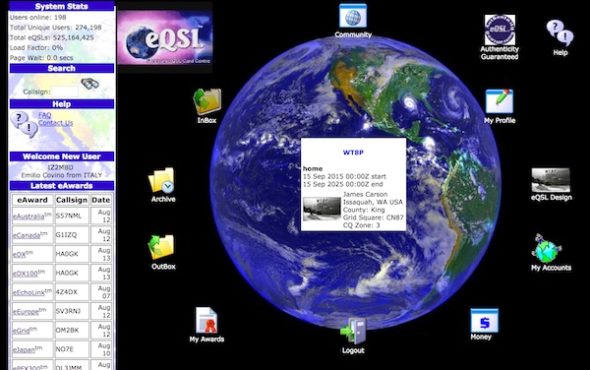
It’s free, but for a small donation, you can customize your “cards.” For example, here is one from someone I had a contact with last month:
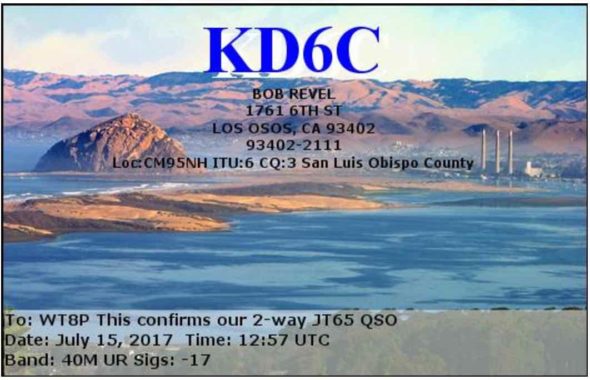
A third option is QRZ.com. While LoTW and eQSL feel like they’re from the 1990s, QRZ.com is more 2007-ish. Its logbook is closer to feeling like a database:

I should also mention qrzcq.com, which is a qrz.com knock-off. While it initially felt more grounded (early 2012-ish), its database is outdated.
It’s really unfortunate these sites don’t have better interoperability. QRZ can post to and read from LoTW, but through a process where you paste your password into a web dialog. (Am I the only one who sees a potential issue here?) Data exchange can lose of precision. One site uses start time, another uses end time. For a few QSOs that lasted longer, they show up as separate contacts. In the zeal to prevent gaming, they give up deduplication. And some have really terrible deduplication (*cough* QRZCQ) I had to delete and re-upload my log.
So I also maintain my own database… I have ordered a bunch of cards to send out via postal mail (kind of like PostCrossing!).
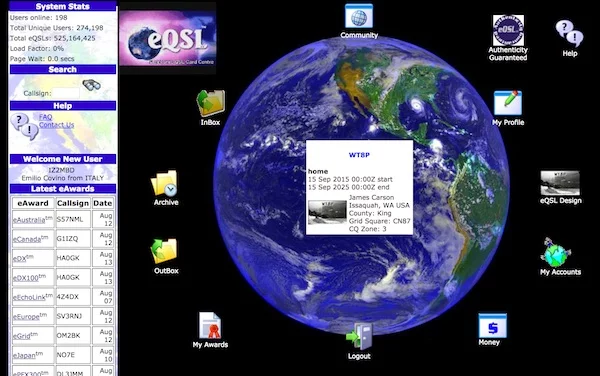
Every time you post about your radio adventures I can’t help but be reminded of Tony Hancock’s “The Radio Ham”:-)
https://www.youtube.com/watch?v=Ioxm2P5ccU0
Huh, I’d never heard that one before. Something to listen to on my bus commute! Thanks, Steve.
Wow. So many contacts. Impressed and kinda jealous.
It’s been kind of fun (and an excuse to sit out on the deck while the house cools off). If I can make it to Portlandia in October, will bring my radio so you can play, too.